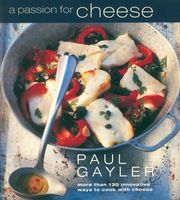Advertisement
Goat’s Cheeses
By Paul Gayler
Published 1997
Ranging in texture from soft and creamy to dry and sliceable, goat’s milk cheeses are now made in countries all over the world. In France they are known as chèvre, the generic term for such cheeses. While they all share a dry, piquant aftertaste, their tangy - and unmistakably ‘goaty’ - flavour varies in strength according to the region of production, altitude, ripening period and mould cultures.
Traditionally produced on small farms or co-operatives throughout France and the Mediterranean, chèvre is made into a variety of small shapes: logs (bûches), dainty cylinders (bûchettes), little bells (clochettes) and an assortment of pyramids, discs and so on. The name crottin - which, you may or may not wish to know, means horse droppings! - refers to the shape of the small, hard, round goat’s cheeses and also to their slightly darker colouring. Crottin de Chavignol is probably the best-known example and is highly prized for its bracingly sharp, full flavour.


